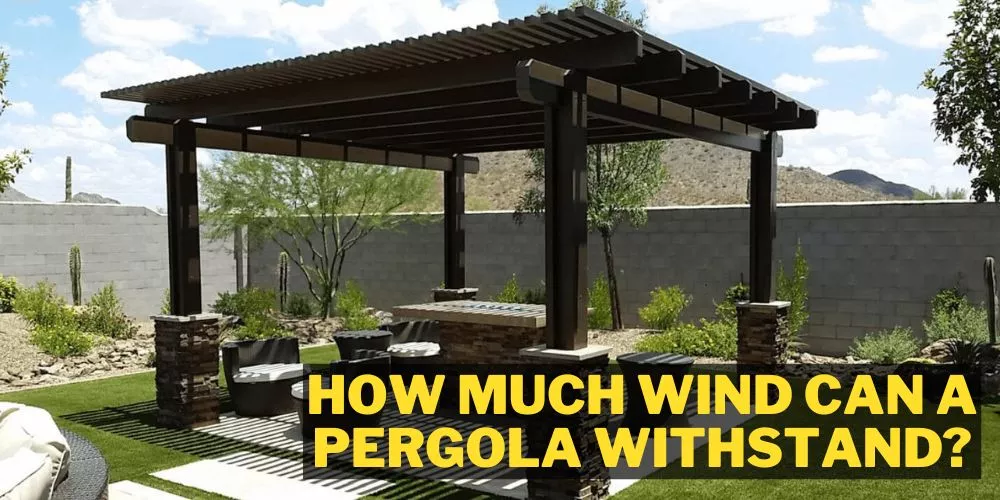Utilizing a greenhouse to grow plants has many benefits. They can help protect them from any potential damage caused by insects or animals. They can provide shelter from harsh weather conditions, meaning you can grow all around. The biggest issue with owning a greenhouse is the large area required to construct one. But Can you use a gazebo as a greenhouse?
Yes, transforming a gazebo into a greenhouse can be a great alternative. They are generally much cheaper and offer a generous amount of space even though they have a compact footprint. In this article, we’ll discuss the many benefits of using gazebos as greenhouses and how to convert one with relative ease.
Can you use a gazebo as a greenhouse?
Gazebos have the potential to become an amazing semi-permanent greenhouses. However, they may need some adjustments to ensure they have the same characteristics as a greenhouse. This includes either glassing in or adding some other kind of translucent material to promote insulation from both the heat and chills. Furthermore, depending on the climate, it may also require heat lamps to assist with retaining heat.
Not all gazebo types will work, though. Pop up gazebos simply wouldn’t be strong enough. They would blow around in strong winds, and it would be difficult to attach any type of insulating material too. Permanently built, traditional-style gazebos can work if the shape permits. However, the traditional variants don’t offer much in the way of functionality.
They are generally constructed using heavy-duty materials, including their roof, which would need a complete overhaul. Nothing is stopping a bit of tinkering, though. The best gazebo style to repurpose would be a hard top. Hard tops fit the bill because they are both structurally strong, and their shape is much easier to customize. So, economically and logically, upscaling this type of gazebo would be the best viable option.
How to Convert a Gazebo to a Greenhouse?
Upscaling and converting a gazebo into a greenhouse can be a rewarding task. In this next section, we’ll have a look at how to create a greenhouse masterpiece in an easy to follow step by step guide. When planning your transformation, there are 2 worthy choices that you can make.
One requires a larger budget and more time to complete; the other can be simple as throwing a sheet of quality plastic over the top. Let’s have a look at both methods in more detail.
convert a permanently built gazebo into a greenhouse (Tutorial)
Box or square gazebos work best as they are much easier to customize. Hexagons and octagons make adding in benches, shelves, windows, fans, and any wall and roof alterations more difficult. So let’s assume your gazebo is square; it can even be something like an existing spa gazebo you want to repurpose. The following steps will result in a wonderful new greenhouse.
What you will need?
- General hand tools (hammer, nails, hand saw, jimmy bar, screws, etc.)
- General electric power tools (screw gun, drill, drop saw, etc.)
- Measuring tape
- Spirit level
- 2x4s for reinforcing
- Polycarbonate sheeting or something similar allows the sun to shine in
- Fixing strips for sheeting
- Stirrup brackets for attaching posts to concrete
The process:
- Remove any existing roofing, including ventilation and fans (If any were installed).
- Check the roof frames’ overall condition and reinforce them with 2x4s if necessary.
- Replace the roof with polycarbonate sheeting. Make sure that all joins and transitions are sealed and watertight.
- Once the roof is complete, go through a similar process with the walls. Remove all outside cladding and anything else you don’t wish to utilize in the greenhouse.
- Reinforce the walls by adding 2×4 studs. Build wall boxes for mounting windows and fans.
- Install windows and fans in the walls if necessary.
- Add in any cable work for power and lighting
- Add in any pipes for water access.
- Install new polycarbonate cladding and seal for water and air leaks.
- Replace the door if required and ensure that it is sealed.
- Some floors need to be revamped. Using self leveling concrete is a cheap and effective alternative. This will give the gazebo something to anchor to. In this case, install brackets and fix the gazebo posts and concrete to prevent movement. Otherwise, some packed crushed work can also be worth investing in.
- Fit off any power points, lights, taps, etc
- By this stage, the shell should be complete. Now you can go inside and build any benches, shelving, planter boxes, etc., to suit your needs. \
How to convert a hardtop gazebo into a greenhouse?
Converting a hardtop gazebo can be done similarly to the example we have just gone through. However, the scale may be slightly smaller. Alternatively, you can purchase a sturdy plastic such as this Polyethylene. This is generally the most common plastic material used when converting greenhouses. It’s quite thin (6-12-mil), durable, and reasonably priced compared to other plastic types.
You can simply drape a whole sheet over the top of the gazebo and carefully attach it to each of the legs and the upper frame using heavy-duty tape. Once the outer areas are in place, you can put something weighted on the bottom edges or secure them with camping stakes. A single layer of polyethylene works just fine, but doubling up the layer is much more effective in protecting it from the outside elements and insulating the inside.
A Few Additional Tips
One thing worth noting is that a gazebo wouldn’t be classed as a greenhouse unless you removed the roofing section and replaced it with something translucent. If you were to only have the sides as a means of sunlight, then it would be more classified as a conservatory. Some other tips that ensure your gazebo becomes a solid greenhouse include:
- Make Ensure that everywhere is completely sealed for any water that can seep in, drafty winds, and of course, pesky bugs and insects. The last thing you want is all your hard work to come undone by missing minor details.
- Adding heat lamps, lights and fans. All 3 of these auxiliaries serve some very unique purposes. The heat helps in the colder months, fans help reduce humidity, and lights increase overall growth.
- Don’t skimp on insulation. The whole point of greenhouses is to maintain a stable temperature all year around. The sun cannot supply all of the heating by itself. So having a decent insulation profile will ensure that the received rays can be retained. This also assists in the summertime when the fans are in use; insulation helps to regulate the temperature once adjusted by the fans.
Frequently Asked Questions (FAQs)
Can a gazebo stay up all year?
Traditional gazebos and hard tops are designed with strength and stability in mind. Therefore they can stay up all year, even as converted greenhouses. As long as they are well constructed and adjusted to suit, there is no problem with them surviving year-round weather conditions. Portable gazebos, on the other hand, are not ideal as they are generally designed for outdoor activities that require fast erection and dismantling. Their materials just can’t handle the rigors of year round weather.
Can a gazebo be warm in winter?
A gazebo can be warm in the winter if it is converted to do so. By adding some greenhouse polyethylene plastic and securing it to the legs and frames, you have a year-round growing room. Doubling the layer of the plastic can be even more effective. Alternatively, you can upscale an existing gazebo with polycarbonate sheeting into a great greenhouse alternative.
Can you leave the metal gazebo out in winter?
Yes, there is no reason why a metal gazebo shouldn’t be left out during the winter. Some permanently built gazebos are made from metal and would be difficult to dismantle yearly. The only risk that may arise is lightning storms which can be mitigated by adding copper grounding rods upon installation. Although, it doesn’t guarantee the safety of a human.
Conclusion:
Gazebos can be an amazing greenhouse alternative if upscaled correctly. The main things to consider are retaining heat, ventilation, and allowing light to penetrate the structure. Some alterations are extensive, while others can be done in less than an hour. Your imagination only limits a build such as this. We hope that this guide has been helpful. You can read about similar topics here on our website. Check back again soon for more.

